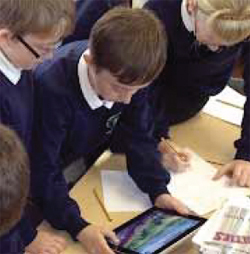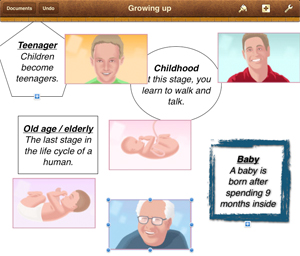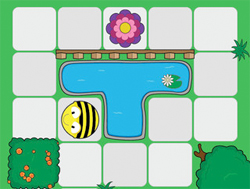“I hear and I forget. I see and I remember. I do and I understand.” - Confucius
1. It is a fun experience!
As an Early Level teacher, I see the benefits of active learning. It is a fun way of getting the children to engage in a subject without them thinking its work. It is an organic process; not always planned and possible to be confidently led by the children themselves.
1+2 Approach (Primary Language Learning)
In Primary 1, we have been actively involved in integrating the 1+2 approach into our everyday classroom environment. We have two class mascots called Etienne (French elephant) and Jorge (Spanish giraffe), who represent the two languages which are taught. These mascots have proven to be an excellent resource to the class. The children have to look after the mascots during the day; showing them care and respect and allowing them to be part of their learning experience. On a Friday, the children are given the opportunity to take the boys home. The adventures of Etienne and Jorge are recorded via Twitter or through our adventure journals, which are put inside the boy’s travel bags.
Sarah* was born with a congenital limb deficiency, meaning that her right arm was shortened slightly and she had all but two of her fingers missing on her right hand. Her parents loved her and wanted the best for her, and she was fortunate to have been born at a time where she could go to a mainstream Primary school with no problems... no problems other then being bullied and having no positive role models with disabilities like hers. With her self-confidence low and doubt about her future and what she could achieve, Sarah and her mum were scared about what the next few years would bring. Then one day her primary school bought in a visiting speaker.
As part of their Art curriculum, Furzedown Primary School in south west London has been running workshops on architectural design. This is to help the children’s knowledge and understanding of materials, structure, colour and aesthetics, and how they can be applied physically into built assemblies. Architectural design is not a subject normally taught in schools before college, but it is a subject that is very relevant to everyone. We all live in the built environment which is heavily managed with lots of design interventions. Individually and collectively these affect us directly, so why not bring architectural design into the classroom?
There are many different ways for schools to get involved with fundraising, whether it be for charity or to raise money for a school requirement, such as a new classroom or equipment. In order to promote positive behaviour, primary schools can encourage pupils to fundraise as a worthwhile group activity that can help others or benefit their own learning.
The science lab is an exciting place for students, so why not make the most of this with the latest edtech on the market? Primary education specialist Maggie Morrissey advises teachers how best to make science classes as lively as possible.
[As seen in the February 2014 edition of our magazine]

Throughout my teaching career I have enjoyed using technology in education, especially in science lessons. As an ICT coordinator I introduced teachers, teaching assistants and children to a variety of digital resources such as data loggers, digital microscopes and simulations to help support the teaching of science.

This article originally appeared in the September 2012 Innovate My School magazine.
The iPad is perhaps the most talked-about piece of technology in teaching. Enthralled by tales of educational potential and egged-on by technophile staff, head teachers might be forgiven for investing in the trendy tablets without fully considering how they should be used.
Google Earth is certainly good for familiarising children with foreign geography. Socrative provides a quick way to gauge a class’s progress. The Numbers app enables pupils to produce spreadsheets and graphs, and the Math Bingo game can help them learn arithmetic.
But these programs (or very similar ones) are available on any computer with internet access.
The point is that for many tasks - including essay writing and accessing information - iPads are probably no better than desktops or laptops. Lacking a keyboard, they may even be considered inferior for some purposes. And are the mathematical benefits of Math Bingo really best realised when every pupil in the class is playing the game on a separate device?

Many of my posts look at ways to use the iPads in Literacy and Numeracy to enhance learning and engage, motivate and inspire children. But how can using the iPad also help children in other subjects like Science, History or Geography?
Here are some ideas about how using the iPad can help students to show, share and develop their learning in these subjects, with a distinct focus on Science.

As part of the proposed new draft primary curriculum for ICT, there is a significant emphasis on computer science. Below I've included a selection of apps which can be used in both Key Stage 1 and Key Stage 2. The apps included range from basic skills in coding a Beebot to more advanced skills in coding games and simulations in apps such as Hopscotch and Codea.
I've also included some other useful 'ICT' apps, which can be used to develop a pupil's typing skills and spreadsheet skills.
Last December, we took 8 of my Year 6 children on an extraordinary school trip! Armed with our GoPro camera, a GPS tracker, a polystyrene protective case designed by our caretaker, a large weather balloon, 2 canisters of helium and our brave Lego stuntman (the children named him Bob), we set off to find a suitable launch area.
Rather than tell you about what happened next, here is some writing from the children's recounts. I've also included an iMovie trailer that two of the girls made based on the footage they captured during the two days (other trailers can be found on my youtube channel - http://www.youtube.com/user/linakerict).
Now it's over to the children...

A community-driven platform for showcasing the latest innovations and voices in schools
Pioneer House
North Road
Ellesmere Port
CH65 1AD
United Kingdom